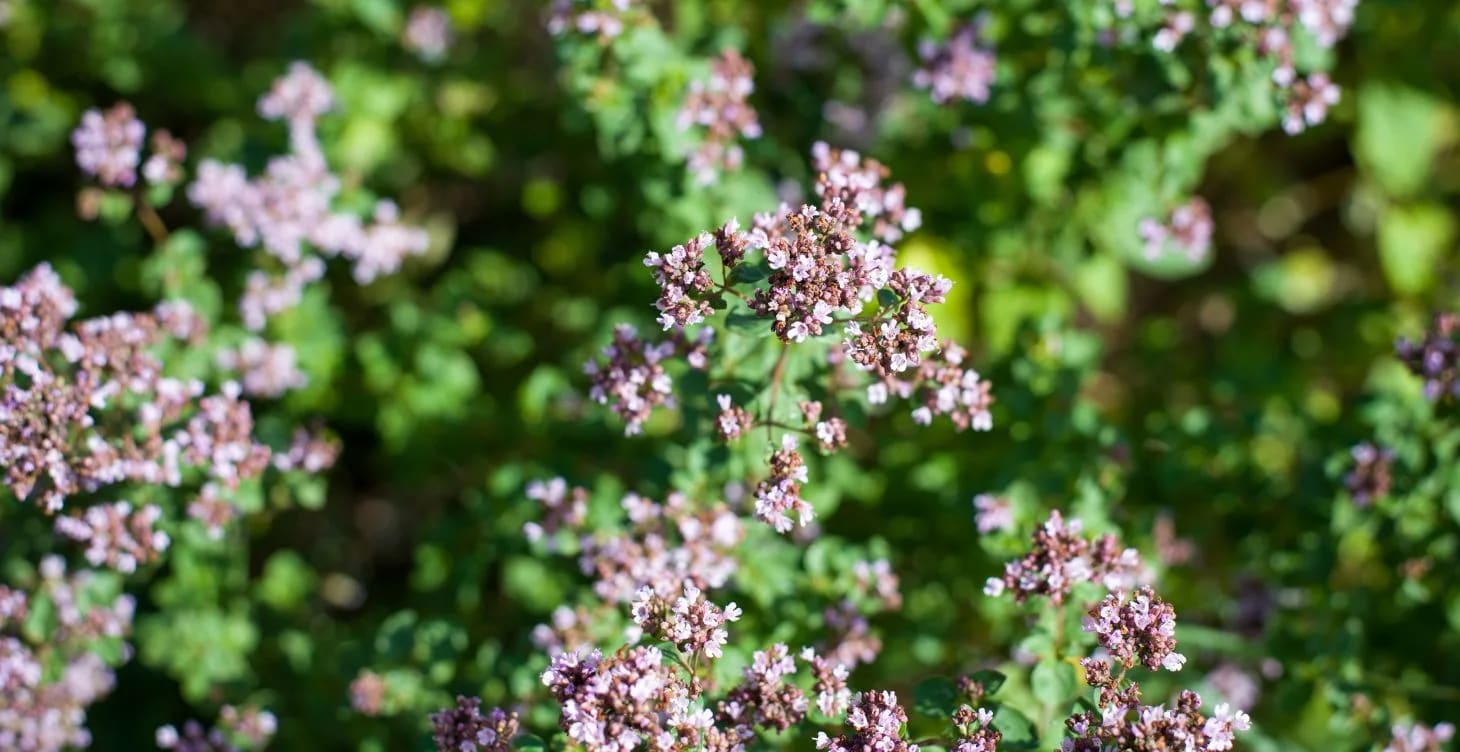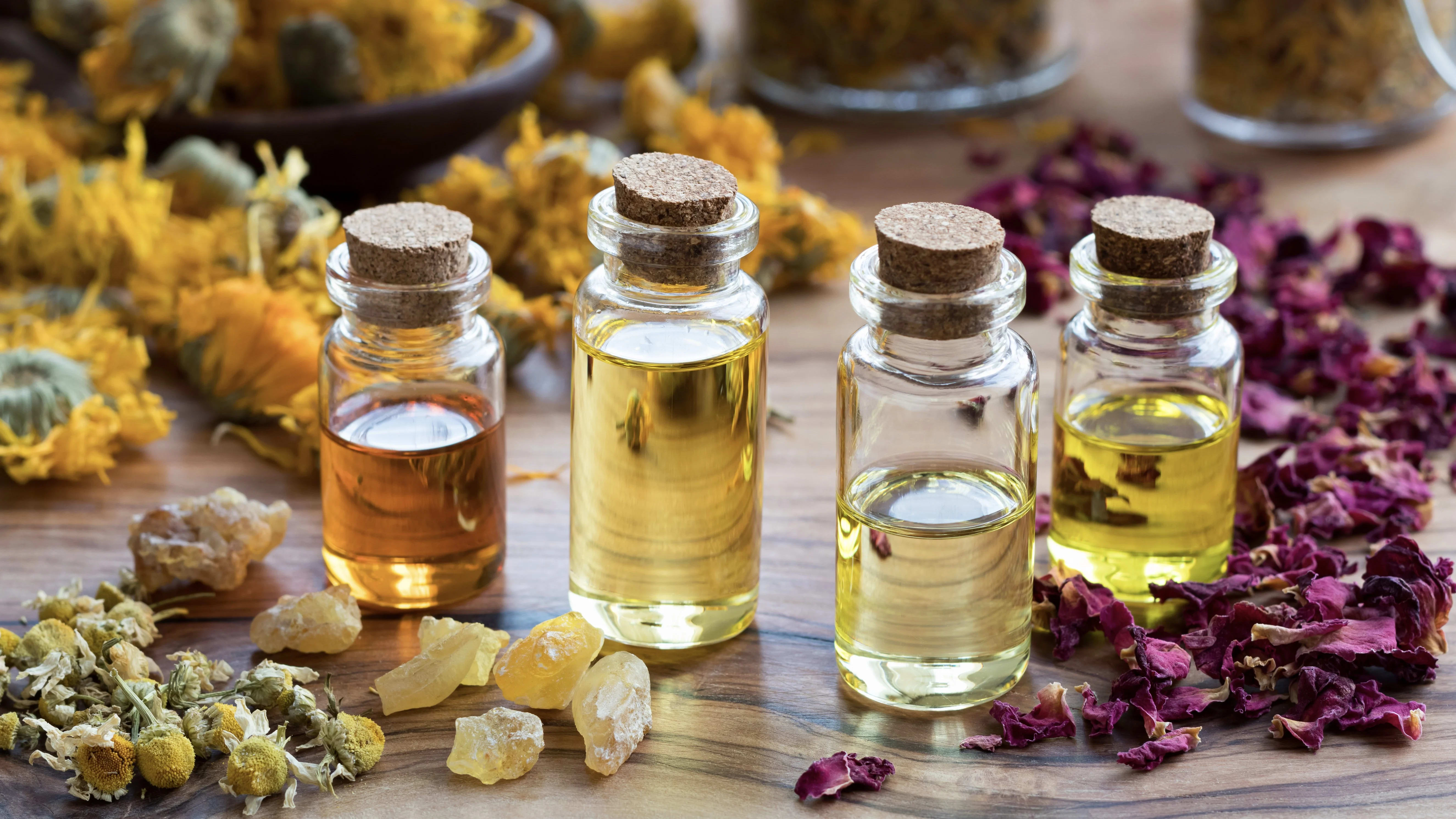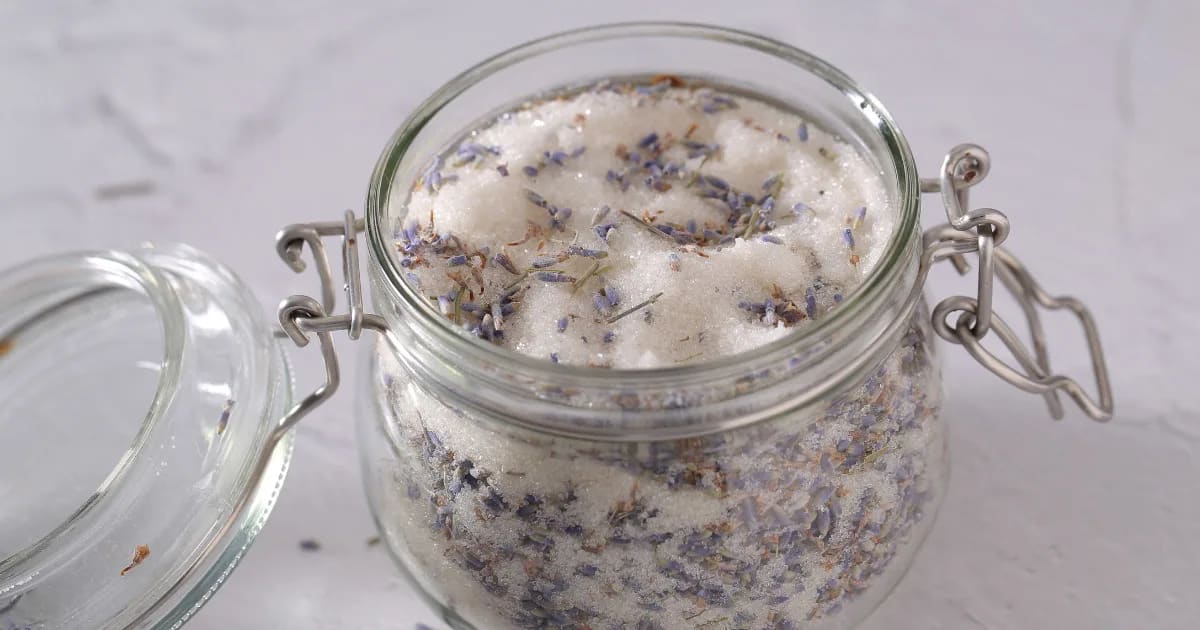Sweet Marjoram Oil: Antispasmodic, Allergy Relief & More

Sweet Marjoram: Soft Strength in a Wild Season
Have you noticed how deeply we are connected to the natural world? This beautiful place shapes us as it stirs, softens, tests our edges, and offers us structure.
Allergy season has a way of reminding us of this. One moment, you're basking in the sweetness of spring plants coming into leaf and unfolding their blossoms. Next, the wind shifts, pollen dances, and you’re reaching for tissues as your eyes water and your nose tickles with a sneeze.
Nature is beauty and challenge, grace and grit. It reminds us that to be alive is to be in rhythm with something larger, something both tender and fierce. In its seeming contradictions, nature teaches us truth: that discomfort often walks alongside growth, that healing is rarely linear, and that even the softest things can hold great strength.
Sweet marjoram is one of those soft strengths. Gentle, herbaceous, and unassuming, this oil carries a quiet wisdom. It reminds us that balance isn't the absence of disturbance. It’s the capacity to return to center. Whether soothing tension or spasms, calming allergy symptoms, or settling the spirit, sweet marjoram invites us into a state of rest that is deeply earned and deeply needed.
In this post, we’ll explore Sweet Marjoram essential oil (Origanum majorana) including its:
Origins & aroma
Chemistry
Benefits & uses in aromatherapy
Safety considerations
Sweet marjoram is the kind of plant ally that reminds us that healing doesn’t have to shout to be heard. Sometimes, all it takes is a gentle breath in.
Origins & Aroma
Native to the Mediterranean region and the Middle East, the sweet marjoram plant (Origanum majorana) thrives in sun-soaked climates. It’s a member of the mint plant family, Lamiaceae, and is related to oregano (Origanum vulgare, which is sometimes known as wild marjoram). However, sweet marjoram is more nurturing than oregano! It even has a physical warming effect, comforting sore, achy areas of the body. The plant typically comes into flower in late summer. It grows abundantly in the wild, and many people successfully pot marjoram in a container and cultivate it indoors.
Sweet marjoram essential oil is distilled from the flowers and aerial parts of the plant. Its aroma is soft and herbaceous, with gentle floral undertones and a subtle peppery finish.
Along with trusting it as a medicinal herb, the Ancient Greeks and Romans cherished it for marriages and funerals. It was an herb of harmony, helping us align with our lives from a place of peace and strength. This is echoed in the way we use essential oils today for emotional support. It’s a deeply comforting, balancing oil.
Author Peter Holmes says:
Marjoram was associated with Osiris, the god of constant death and rebirth inherent in all of life. Significantly, emotional rejuvenation results mainly from one’s ability to let go of long-held distressed emotions. The process of grieving for personal loss, for instance, is traditionally often supported with marjoram.
And author Gabriel Mojay sheds light on the Origanum majorana plant's use for weddings:
As an Herb of Love, it nourishes the place from where neediness springs, helping to restore our power to give.
This is an essential oil and a plant that helps us release deep neediness and cravings, allowing us to nurture our inner well-being and the well-being of those we love.
Today, we often turn to sweet marjoram (and its cousin oregano) for culinary use, adding the fresh herb or dried marjoram to stews, soups, and sauces for flavor. This aromatic herb even has edible flowers, which can be used as a garnish. Of course, it's delicious in Mediterranean dishes!

Sweet Marjoram’s Chemistry
Sweet marjoram’s therapeutic magic lies in its beautifully balanced chemistry. Its primary components include:
Terpinen-4-ol – Known for its antimicrobial, immune-supporting effects. This compound is also present in tea tree oil (Melaleuca alternifolia). While it plays a gentler, more soothing role in sweet marjoram, its presence tells us we can turn to this oil for antimicrobial use (Carson, Hammer & Riley, 2006).
γ-Terpinene – This lesser-known component offers antioxidant and anti-inflammatory support (Kim et al. 2004; Ramalho et al. 2015).
Sabinene – A powerful constituent that helps reduce inflammation by preventing COX-2 expression—the release of an inflammatory enzyme (Valente et al. 2013; Tyagi et al. 2020). (Learn more about suppressing COX-2 with essential oils.)
Together, these constituents work in synergy to create an oil that’s calming, restorative, and cleansing—perfect for nurturing both the body and the spirit.
Benefits & Uses of Sweet Marjoram Oil
Sweet marjoram is a steadfast ally when your body or mind needs to soften and settle.
Antimicrobial Benefits: With compounds like terpinen-4-ol and sabinene, sweet marjoram offers gentle antimicrobial support. It can help inhibit the growth of certain bacteria and fungi, making it a useful ally for skin care, immune blends, and natural cleaning routines (Tyagi et al. 2020; Carson & Hammer, 2006). Include it in your blends to help calm infections. (Try blending it with bee balm, Monarda fistulosa, to fight infections.)
Allergies & Respiratory Care: Sweet marjoram helps open the airways and calm the body’s histamine response (thanks to terpinen-4-ol). Whether dealing with seasonal sniffles or a lingering cough, this oil supports clear breathing and eases irritation (Koh et al. 2002). Add it to allergy inhalers or use a drop to do an essential oil steam. Learn more about using essential oils for allergy symptoms here.
Antispasmodic Support: One of sweet marjoram’s standout gifts is its ability to relax spasms, whether it’s a persistent cough, a bout of sneezing, or a muscle that just won’t stop twitching. A warm compress with sweet marjoram oil can be especially helpful for sore muscles or menstrual cramps (Battaglia, 2019). Use it in a chest rub or throat salve (for external application). (Inhaler blends can also be super-soothing for coughs. Try this recipe.)
Anti-Inflammatory Benefits: Sweet marjoram’s gentle yet effective anti-inflammatory action can help soothe overworked joints, muscles, or skin. It’s a lovely companion in massage blends aimed at calming the body’s tension and inflammation (Kim et al. 2004; Carson, Hammer & Riley, 2006; Valente et al. 2013). Try pairing it with juniper berry, Juniperus communis, for sore muscles.
Nervous System Soothing: Sweet marjoram is an emotional balm for frayed nerves. Its calming properties help quiet mental chatter, ease stress, and promote deep rest. Inhaling the aroma or adding a few drops to an evening bath (follow these tips for using essential oils safely in your bath) can create a sense of stillness after a hectic day (Battaglia, 2019).

Sweet Marjoram Oil Safety Tips
Sweet marjoram is generally considered safe and non-irritating. Proper dilution is key with all essential oils, especially for topical use. The Aromahead Approach® to diluting essential oils is:
1%: 5–6 drops in 1 fl oz (30 ml) of carrier. Best for children from 5 to 10 years old. (We typically use hydrosols and carrier oils instead of essential oils for those younger. Check this post for additional information on blending for kids.) We also use this low dilution for seniors and those with sensitivities.
2%: 10–12 drops in 1 fl oz (30 ml) of carrier. It is best for everyday use, long-term use, and emotional support.
3%: 15–18 drops in 1 fl oz (30 ml) of carrier. Best for short-term use to support an acute issue, like an active cold or muscle cramp.
And of course, it’s always wise to patch-test when trying any new oil.
My Takeaway
In a world that often moves too fast, sweet marjoram reminds us to soften, to pause, to breathe.
This plant has a gentle nature that doesn’t demand attention, yet it offers so much ease for the body, calm for the mind, a quiet hand resting on the shoulder of the spirit.
Whether you're navigating the stirrings of allergy season, the weight of a busy schedule, or simply longing for a deeper sense of balance, sweet marjoram offers a gentle reminder: rest is not a weakness, soothing is a form of strength, and even in its challenges, nature always holds space for healing.
REFERENCES
Battaglia, S. (2019) The Complete Guide to Aromatherapy (Third Edition) Vol I: Foundations & Materia Medica. Zillmere, QLD, Australia. Black Pepper Creative Party, Ltd.
Carson, C. F., Hammer, K. A., & Riley, T. V. (2006). Melaleuca alternifolia (tea tree) oil: a review of antimicrobial and other medicinal properties. Clinical microbiology reviews, 19(1), 50-62.
Holmes, P. (2016.) Aromatica: A clinical guide to essential oil therapies - Vol 1. Singing Dragon, London.
Kim, H. J., Chen, F., Wu, C., Wang, X., Chung, H. Y., & Jin, Z. (2004). Evaluation of antioxidant activity of Australian tea tree (Melaleuca alternifolia) oil and its components. Journal of agricultural and food chemistry, 52(10), 2849-2854.
Koh, K. J., Pearce, A. L., Marshman, G., Finlay‐Jones, J. J., & Hart, P. H. (2002). Tea tree oil reduces histamine‐induced skin inflammation. British Journal of Dermatology, 147(6), 1212-1217.
Mojay, G. (1997) Aromatherapy for Healing the Spirit. Rochester, Vermont: Healing Arts Press
Ramalho, T. R., Oliveira, M. T., Lima, A. L., Bezerra-Santos, C. R., & Piuvezam, M. R. (2015). Gamma-Terpinene Modulates Acute Inflammatory Response in Mice. Planta medica, 81(14), 1248–1254. https://doi.org/10.1055/s-0035-1546169
Tyagi, V., Singh, V. K., Sharma, P. K., & Singh, V. (2020). Essential oil-based nanostructures for inflammation and rheumatoid arthritis. Journal of Drug Delivery Science and Technology, 60, 101983.https://doi.org/10.1016/j.jddst.2020.101983





